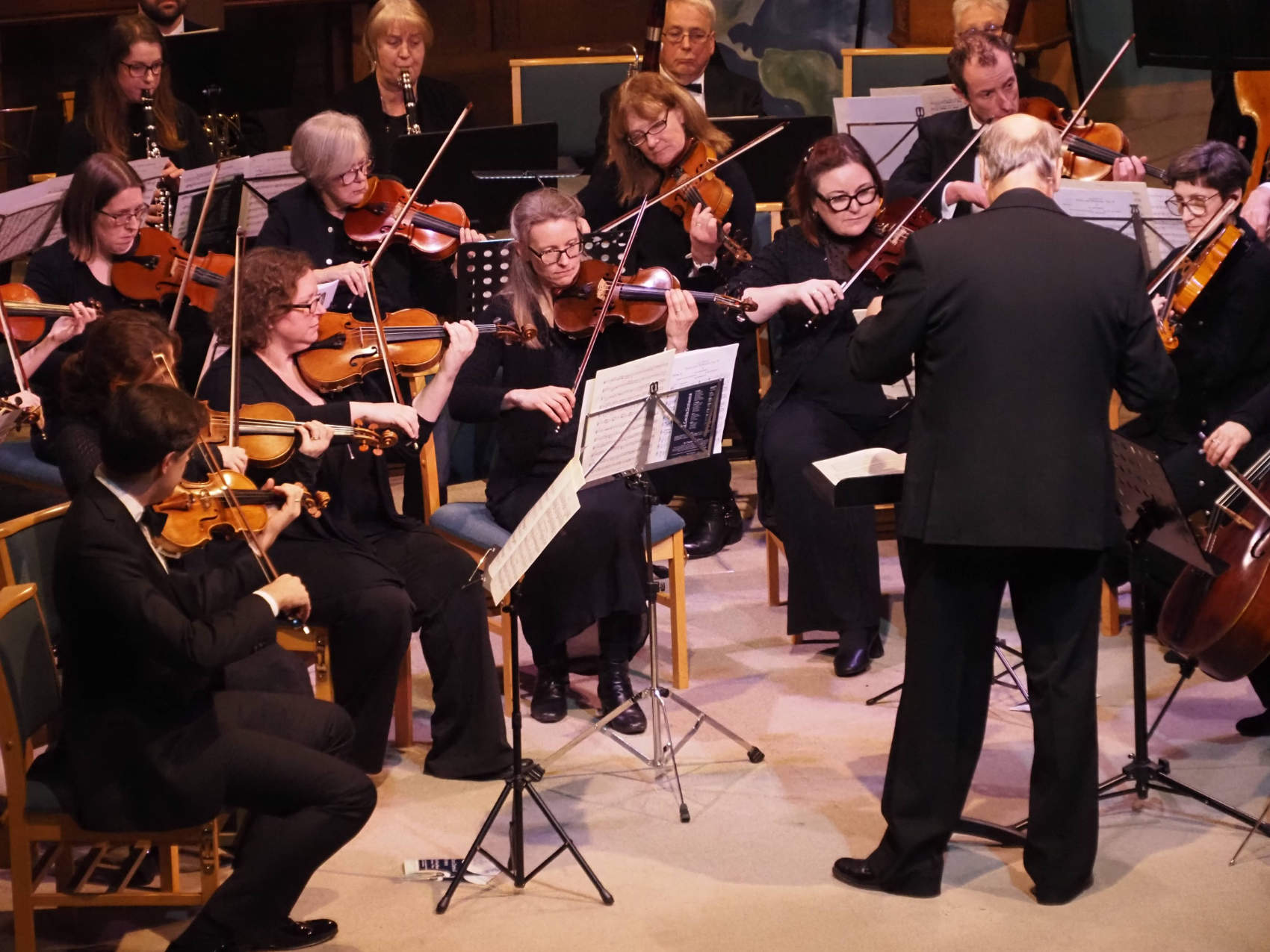On Saturday 28th January, St Cecilia Orchestra treated a large, appreciative audience to a delightful programme of Dance, Drama and Romance at Holy Trinity Church, Ripon.
Richard Strauss’ youthful and Mozartian Serenade for Thirteen Winds made for an elegant, gentle opening. The ensemble settled quickly, with the texture admirably framed by the flutes at the top and ‘honorary wind’ Andy Devine on double bass, with Catherine Hewitt bringing nobility to the melodic moments written for Strauss’ hornist father.
Jean Sibelius’ incidental music for Pelléas et Mélisande would have benefitted from more strings to balance the winds and percussion, but those present (already working in a very tight space) still provided this orchestra’s customary rich tone, particularly in the muted passages. Sibelius’ imaginative colourings were showcased by Alexia Owens’ cor anglais solo, the clarinets’ duet and the violas’ spinning wheel – the latter expertly treading the fine line between latent menace and swarm of bees. Woodwind upbeats sometimes lagged a little behind the strings, but the extraordinary seashore music made a deep impression, as did the searing melody of the final movement shortly before the mournful end. The various moods and tempi were kept under neat control by conductor Xenophon Kelsey, particularly the sudden time changes in the second movement.
After the interval came the short, sweet and spicy Romanian Folk Dances, a collection of dance melodies collected and efficiently dressed for concert use by Béla Bartók. It started – and startled – with a ravishing blend of violin and clarinet, impressively synchronised in an evocative rubato swagger, which continued more gently in the second dance. Clare Graves’ piccolo and Richard Fletcher’s violin solos then provided mysterious and romantic turns respectively, before the rollicking good fun of the final sequence was relished by all.
The concert ended, as it began, with a 17-year-old composer writing after his peers – in this case Mozart who, in his Symphony No. 25, learned from Haydn the art of G-minor, Sturm und Drang and relentless tightrope horn writing which put St Cecilia’s heroic quartet through its paces. A personal thought – admittedly from someone who didn’t have to play all the semiquavers – was that the lighter touch of the last two movements would have served the first two as well: the Allegro con brio and Andante felt a little weighty, but the Menuetto had a definite spring in the step, while the Allegro truly came alive to provide an admirable conclusion to the evening.







